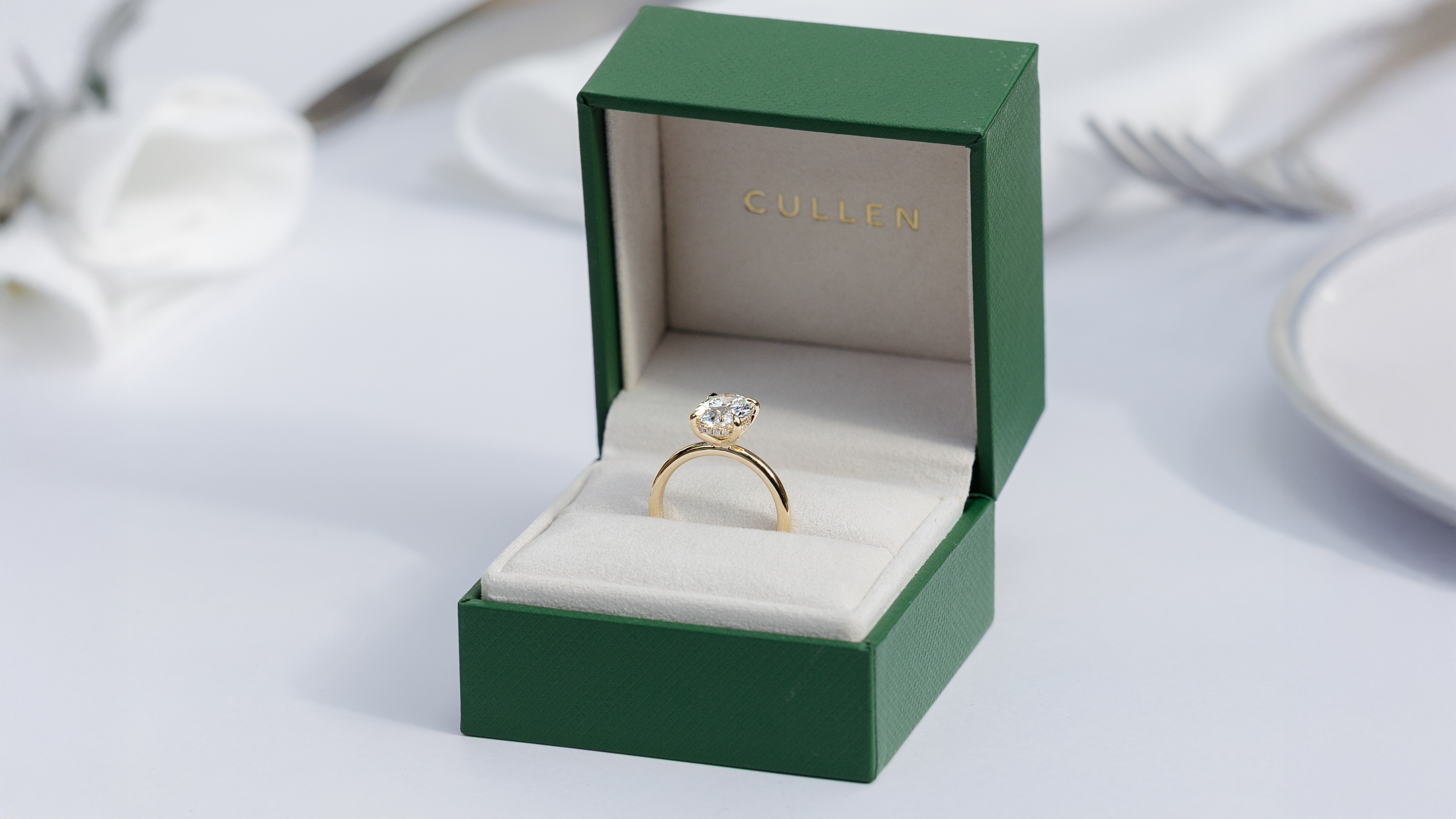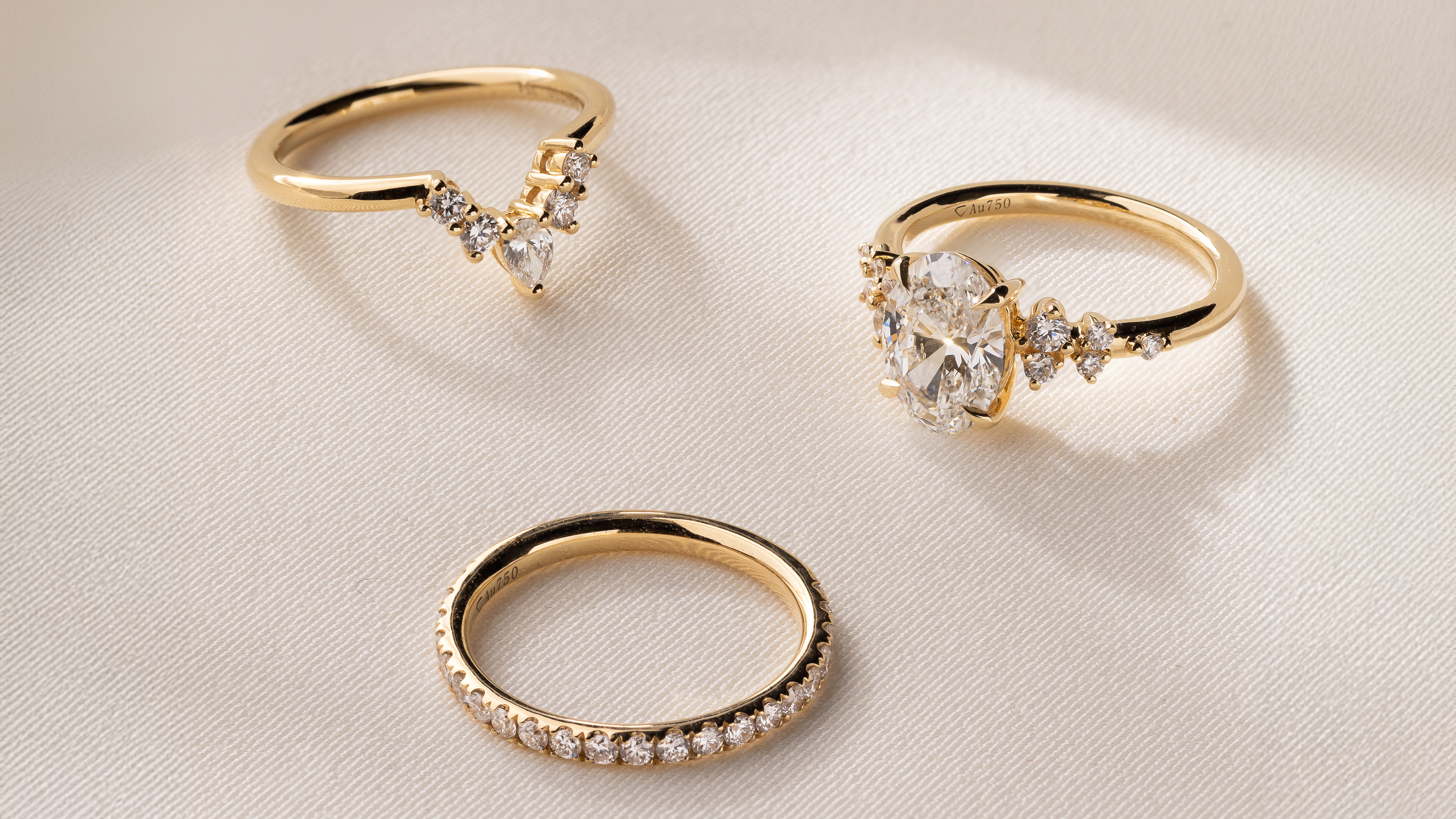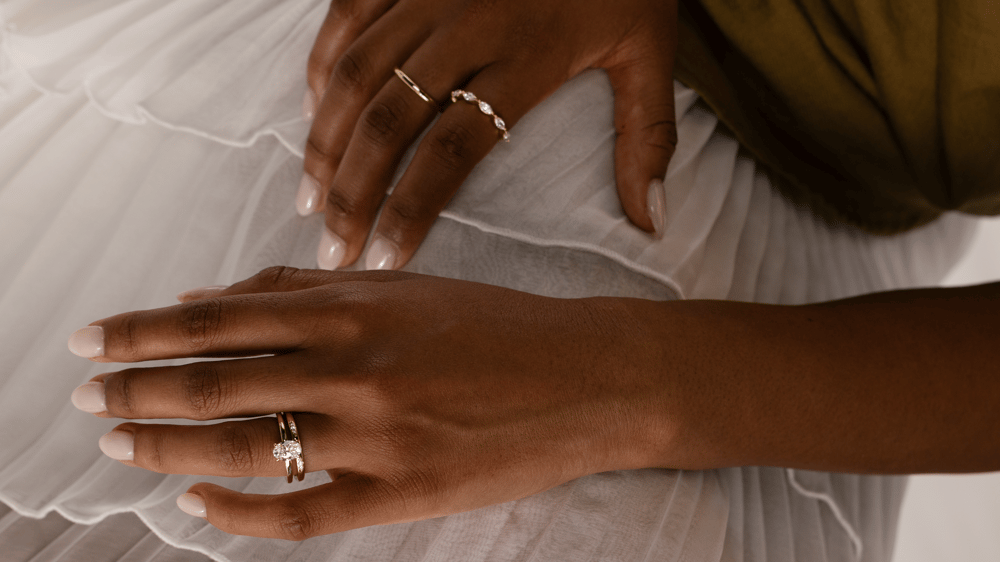
Wondering which finger you wear your engagement ring on? Traditionally, the engagement ring is worn on the fourth finger of the left hand, a custom influenced by the ancient belief in the ‘Vein of Love’ connecting directly to the heart. This article will guide you through the rich history, cultural variations, and modern perspectives on this enduring symbol of love and commitment.
Key Takeaways
• Engagement rings originated in ancient Rome and are traditionally worn on the fourth finger of the left hand due to the belief in the ‘Vein of Love’ that was thought to connect to the heart.
• Diamond engagement rings became popularised in the 15th century by Archduke Maximilian and are seen as a symbol of love and commitment, while alternative engagement rings offer unique expressions of individuality with different gemstones and designs.
• Engagement and wedding ring customs vary internationally, with some cultures wearing rings on different hands or fingers, reflecting a diverse array of matrimonial traditions. In modern times, even men wear engagement rings as a symbol of unity.
The Origins of Engagement Ring Traditions
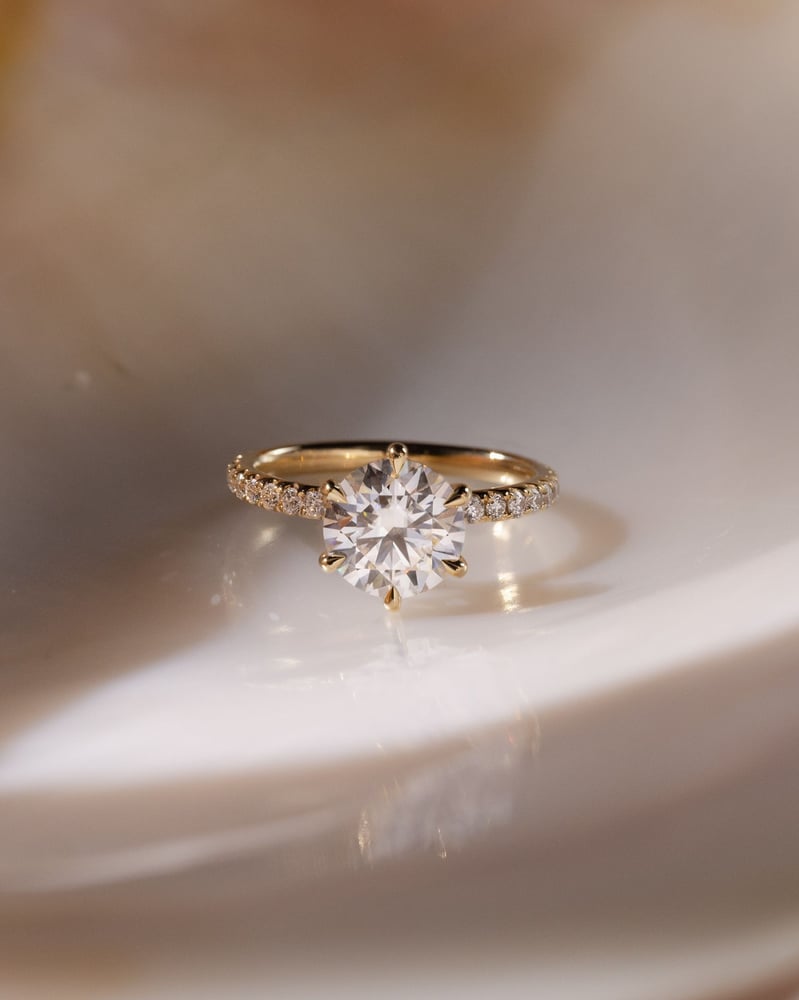
Engagement rings have been a symbol of unity since the 15th century. The tradition originates from ancient Rome, where wives wore rings adorned with small keys. As we delve deeper into history, we find that:
• Roman women received two wedding rings, one made of iron and another of gold.
• The Egyptians gifted rings as symbols of devotion.
• These ancient societies believed in the ‘vein of love’ running directly from the heart to the fourth finger of the left hand, a belief that influenced the tradition of wearing the engagement ring on this finger.
So, what was the ancient perception of engagement rings? They held the fourth finger of the left hand as a channel of love. This belief continues to influence the contemporary practice of donning the engagement ring on the left hand’s ring finger.
Ancient Beliefs
The ‘Vein of Love’ or ‘vena amoris’ is a traditional belief suggesting a vein running straight from the fourth finger of the left hand to the heart. Although there’s no such vein, this belief, along with the symbolism of the ring, has significantly influenced engagement ring traditions. The ancient Egyptians, for instance, saw engagement rings as symbols of eternal love, solidifying the tradition of wearing engagement rings on the fourth finger of the left hand.
In ancient times, engagement rings were made from materials like:
• Ivory
• Flint
• Bone
• Copper
• Iron
These materials signified a woman’s marital status and were sometimes used as currency or dowry. Over time, gold and silver took over, with gold being the primary material for the rings and silver for diamond mountings. Ancient beliefs left an indelible mark on engagement ring designs. For instance, the circular shape, thought to represent eternal love by the ancient Egyptians, has remained popular.
Moreover, the tradition of gifting diamond rings for engagements was influenced by wealth and social class.
Modering Influences
Despite the deep-seated traditions of the past, modern influences have significantly shaped the engagement ring industry. One of the most notable influencers was Archduke Maximillian of Austria, who gave the first known diamond engagement ring to Mary of Burgundy. This event took place in 1477 and marked a major shift in the engagement ring tradition.
The Archduke’s habit of presenting diamond engagement rings had a profound impact on the industry, establishing diamonds as a favoured emblem of betrothal. Presently, diamond engagement rings are ubiquitous, signifying the joining of two hearts and the pledge of an unending commitment.
Engagement Rings: A Symbol of Love and Commitment
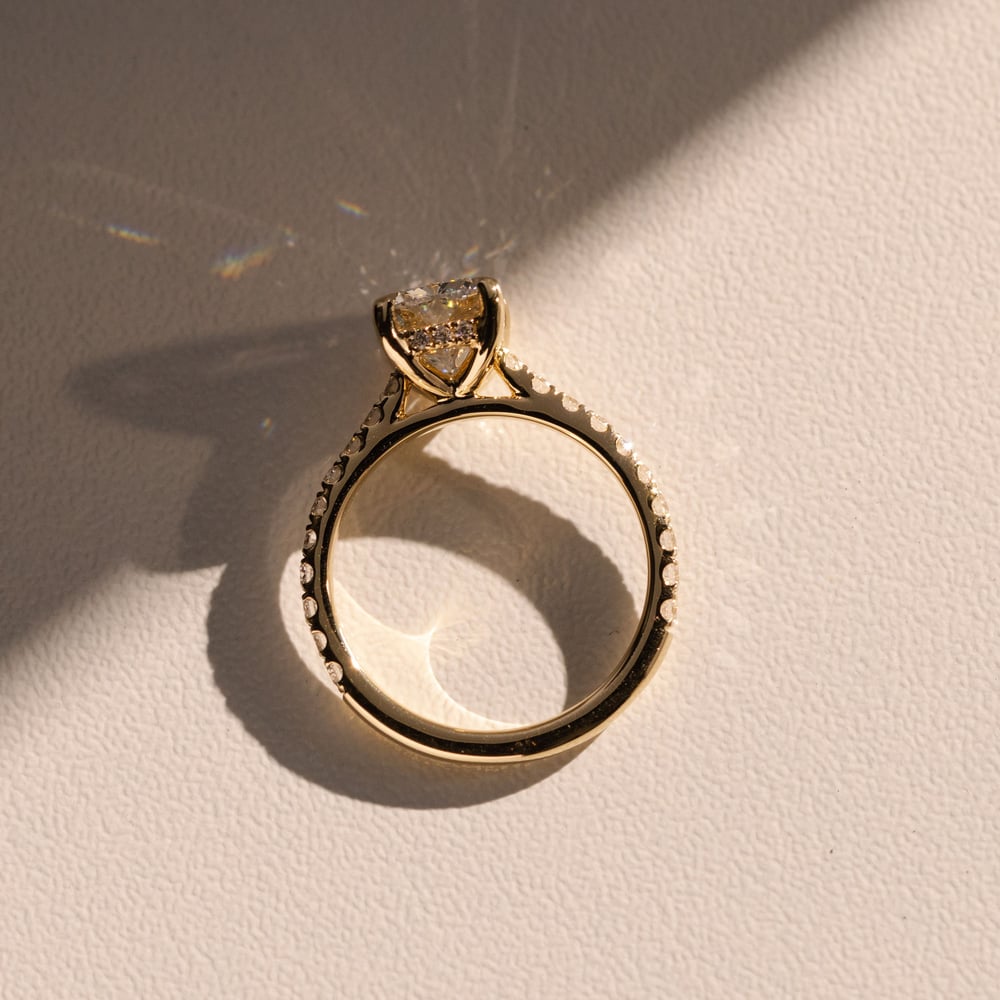
Engagement rings have historically been recognised as a symbol of love and devotion. This representation traces back to ancient times when it was believed that the ring finger was directly linked to the heart. Therefore, the partner would position the ring on the left hand, signifying a bond of endless love and everlasting connection.
Over time, engagement ring styles and materials have evolved significantly. Here are some examples:
• In ancient Rome, people used materials like ivory, flint, bone, copper, and iron.
• During the Edwardian era, intricate designs with large diamonds became popular.
• Today, diamonds are commonly used in engagement rings because they symbolise partnership, commitment, and the celebration of a union.
Diamond Engagement Rings
Diamond engagement rings trace their roots back to the 15th century. Archduke Maximilian of Austria was the first to give a diamond engagement ring to his betrothed, and this trend caught on, becoming a significant part of engagement traditions.
The creation of diamond engagement rings typically involves the following steps:
1. Selection of a precious metal
2. Cutting the metal to the appropriate size
3. Crafting the metal into a design
4. Producing a wax model
5. Casting the final ring
6. Setting the ring with diamonds
These steps result in the creation of a beautiful diamond engagement ring.
No matter the design, a diamond engagement ring remains a symbol of everlasting love and commitment.
Alternative Engagement Rings
In contrast to the traditional diamond engagement ring, alternative engagement rings offer a unique way to express love and individuality. These rings feature unique gemstones or designs, giving a personal touch to the age-old tradition of engagement rings.
When choosing an alternative engagement ring, consider various alternative stones like sapphires, emeralds, or rubies. Look for unique shapes and designs that align with your personal style and budget. One popular gemstone for alternative engagement rings is moissanite, which offers a diverse range of colours compared to diamonds.
Wearing Your Engagement Ring: The Left Hand Tradition

Wearing the engagement ring on the left hand is a tradition deeply rooted in symbolic meaning. This practice is a significant part of engagement customs in many cultures. The left hand, and more specifically the left ring finger, is believed to symbolise love, commitment, and a connection to the heart. This tradition is deeply rooted in Western cultures, where it’s common to wear the engagement ring on the left hand due to the ancient belief in the ‘Vein of Love’.
The practice of wearing engagement rings on the left hand can be traced back to ancient Rome, where it was thought that the fourth finger on the left hand had a direct vein leading to the heart. This time-honoured belief continues to impact the current custom of donning an engagement ring on the left hand’s ring finger.
Engagement Ring Finger for Women: Cultural Variations
Cultural variations play a significant role in the engagement ring finger placement. While many cultures follow the tradition of wearing the engagement ring on the left hand, some opt for the right hand instead. For instance, in countries like:
• India
• Germany
• Spain
• Norway
The engagement ring is placed on the right hand ring finger due to different beliefs and traditions.
In some cultures, the right hand is considered special for wearing engagement rings due to beliefs in the ‘vena amoris’ or ‘vein of love’. Countries like:
• Latvia
• Hungary
• Greece
• Serbia
• Russia
• Belgium
• Portugal
• Ukraine
• Bulgaria
These cultural variations add a unique dimension to the tradition of wearing engagement rings, and many people choose to wear an engagement ring to follow this tradition.
Men and Engagement Rings: Breaking Stereotypes
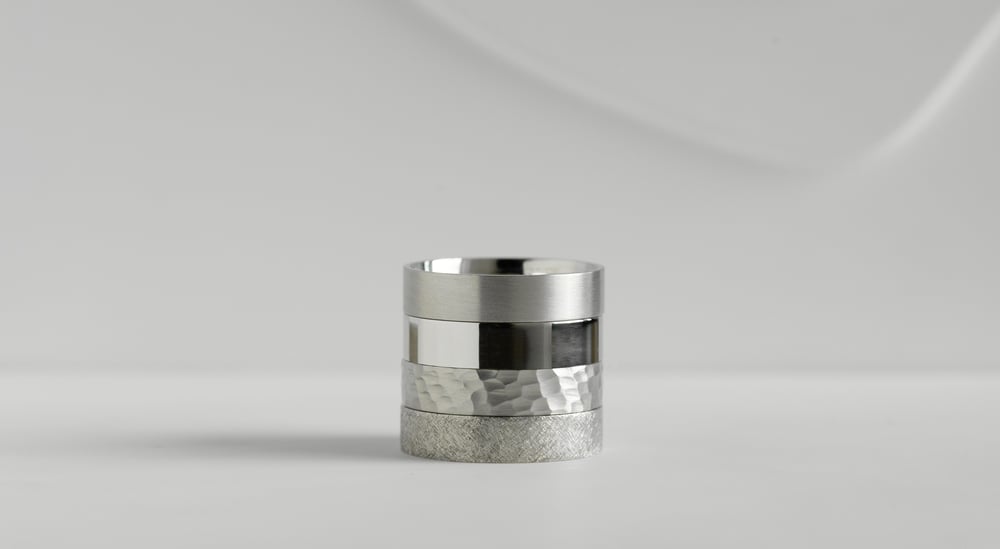
Traditionally, engagement rings were mostly associated with women. However, in recent times, men’s engagement rings are gaining popularity, breaking age-old stereotypes and promoting gender equality. The tradition of men wearing engagement rings gained momentum in the early 20th century, marking a shift from past practices.
Presently, men’s engagement rings, similar to women’s, are viewed as emblems of unity and love. They represent a vow of affection and a commitment pledge, echoing the feelings conveyed by women’s engagement rings. This trend indicates a shift in societal standards and perceptions of gender roles within relationships. For men, the engagement ring styles range from plain bands to diamond bands and signet rings. Plain bands are simple yet classy, while diamond bands add a touch of luxury and elegance to the wearer’s finger.
Wedding Rings: A Timeless Symbol of Unity
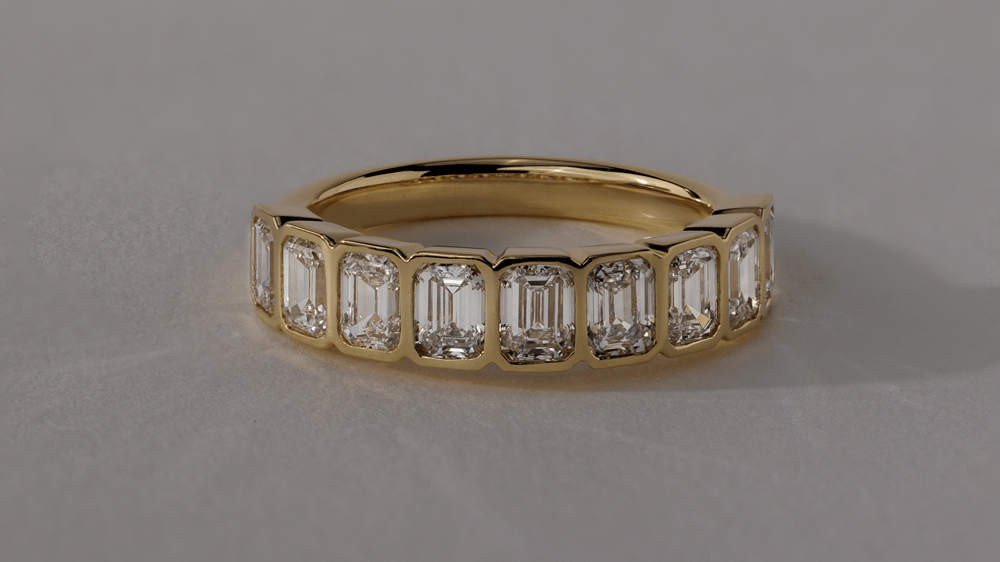
Wedding rings, like engagement rings, carry a deep symbolism. They symbolise unity and commitment, a sentiment that has been carried forward since ancient civilisations. The tradition of exchanging wedding rings dates back to ancient Rome and Greece. Initially linked to the marital dowry, they later became a symbol of unity.
The circular form of the wedding ring embodies love, eternity, and boundless, ceaseless affection. This symbolism aligns with the notion of a circle having neither a beginning nor an end, mirroring the idea of perpetual love.
Wedding Ring Placement: Right or Left?
The placement of wedding rings varies between cultures. In many Western countries, it’s common to wear the wedding ring on the left hand. This tradition stems from the belief in the ‘Vein of Love’ running from the fourth finger on the left hand straight to the heart. However, religious beliefs also influence the placement of the wedding ring. For instance, Orthodox Christians in Eastern Europe often wear their wedding rings on the right hand as a sign of their commitment and faith.
Countries that traditionally wear wedding rings on the right hand include:
• Cyprus
• Georgia
• Parts of the Caucasus
• Denmark
• Norway
• Russia
• Poland
• Bulgaria
• India
• Germany
• Spain
• Austria
These variations add a unique touch to the tradition of wearing wedding rings, often referred to as wedding bands.
International Wedding Ring Customs
The varied international wedding ring customs provide insight into the intricate array of traditions and beliefs associated with marriage and commitment. In Western nations such as the US, France, Canada, and the UK, it’s customary to wear both wedding and engagement rings on the left hand, a practice stemming from an ancient belief about a vein that connects to the heart.
In Asian countries, engagement and wedding rings are not as common and don’t hold the same significance as they do in Western cultures. In traditional Chinese wedding customs, the bride wears her ring on the right hand, while the groom wears his on the left hand. In African societies, wedding rings are not just symbols of marriage; they are also believed to offer protection against harm. Different tribes have their own interpretations, like the Zulus in South Africa who exchange nuptial rings made of beads, reflecting their local culture.
In the Middle East, women usually wear their engagement rings on their left ring fingers, while men wear their wedding rings on the right ring finger, showing how practices vary in different regions.
Eternity Rings: Celebrating Milestones

Eternity rings, embellished with diamonds or an array of gemstones, represent endless love and continuity. They are frequently presented as an emblem of dedication and perpetual affection, typically on momentous occasions or anniversaries. In contrast to wedding rings, which are simple bands, and engagement rings, generally more decorative, eternity rings are not swapped during the wedding ceremony and are typically worn in conjunction with other rings.
The concept of eternity rings has been around for about 4,000 years, starting in Ancient Egypt. The diamond eternity ring we know today was introduced in the 1960s, significantly influencing the design of these rings. The choice of gemstones for eternity rings typically includes:
• diamonds
• sapphires
• emeralds
• rubies
These gemstones are chosen for their beauty and durability, which aligns with the ring’s themes of continuous and everlasting love.
Promise Rings and Commitment Rings: Pre-Engagement Symbols
Promise rings and commitment rings serve as tangible symbols of love and dedication, typically given before an engagement ring. They can symbolise love and dedication at any point in a relationship or friendship, showing a strong bond or a future engagement.
Promise rings and commitment rings trace their roots back to ancient Egyptians and Romans, who used rings as a symbol of love. Today, these rings represent commitment in relationships, serving as a pre-engagement symbol of love and dedication.
Unlike wedding rings, which are usually more ornate, promise rings can have various designs without focusing on a big gemstone.
Finding Your Perfect Ring Style
Identifying the ideal ring style requires thoughtful contemplation of personal likes, cultural customs, and individual styles. Aspects such as your personality, preference for classic or contemporary aesthetics, and personal jewellery taste all contribute to the selection process for the ring’s style and shape. Cultural customs also shape the symbolism and significance attributed to engagement rings, causing a change in the preference for ring styles across various cultures.
Finding the perfect ring style is a personal journey, one that should reflect your individuality and the unique bond that you share with your partner.
Customising Your Ring Experience
Customising your ring allows you to add personal meaning to your ring. Here are some options to consider:
• Add special engravings with important dates or symbols
• Incorporate personal symbols that represent your love story
• Consider vibrant gemstones with their own symbolic meanings
When it comes to materials, people often prefer gold and platinum for customising rings.
Customising your ring experience allows you to create a unique and meaningful expression of love and commitment. Whether it’s choosing a particular metal, incorporating a special design, or adding a personal touch with engravings, a customised ring can truly reflect the depth and uniqueness of your love story.
How to Properly Wear Your Rings: Tips and Etiquette
Correctly donning your rings requires familiarity with cultural etiquette, personal inclinations, and the symbolism of each ring. In Western cultures, it’s customary to wear the wedding band nearest to the heart with the engagement ring on top. Nevertheless, the hand and finger designated for ring-wearing can differ across cultures. For instance, many cultures traditionally wear wedding rings on the left hand’s fourth finger, a custom originating from ancient Rome.
For engagement, wedding, and eternity rings, the usual practice is to wear the rings on the wedding ring finger in the following order:
1. Engagement ring on the left hand’s ring finger.
2. On the wedding day, some individuals prefer to wear the wedding ring on top of the engagement ring.
3. The eternity ring can be worn on the same finger, either above or below the engagement and wedding rings.
Remember, each ring has its own symbolism and significance, so wearing them properly can enhance their meaning and create a lasting impact.
Summary
Through the ages, rings have been a symbol of love, commitment, and unity. From the ancient tradition of the ‘Vein of Love’ to the modern trend of diamond engagement rings, the customs surrounding engagement and wedding rings have evolved significantly. They reflect our cultural heritage, personal preferences, and unique love stories. Whether it’s a traditional diamond engagement ring or a customised alternative ring, each ring carries a special meaning. As we wear these rings, we carry forward the age-old traditions, while creating new ones that resonate with our individual journeys of love and commitment.

